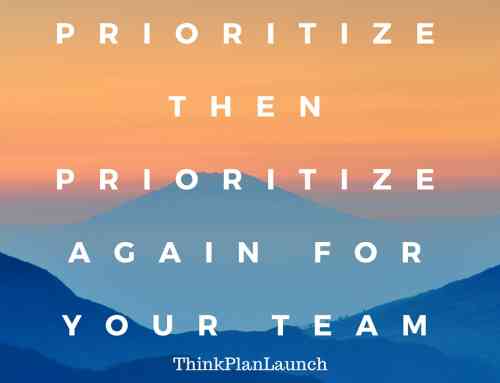Table of Contents
Intrinsic Motivation and Driving Forces
Intrinsic motivation is the primary internal force that causes a person to act. It’s at the core of a person’s thoughts, decisions, and actions. Understanding intrinsic motivation is critical to maximizing your own productivity. Furthermore, understanding the intrinsic motivation of others is crucial to motivating and leading people.
We used to refer to intrinsic motivation factors as “motivators” (and before that “values”). We now refer to intrinsic motivation factors as Driving Forces. The twelve Driving Forces provide a complete, accurate measure of a person’s intrinsic and extrinsic motivation.
When we understand a person’s Driving Forces, we understand WHY they do things. Whereas DISC measures a person’s behavioral style – helping us understand HOW they do things (communicate, interact, make decisions, organize their work, etc.) – Driving Forces goes deeper.
Driving Forces gives us the reasoning behind a person’s working style, career goals, and personal interests. It helps us understand why some people view others as illogical, and vice versa. It gives us a clear window into a person’s priorities, passions, and strengths.
In turn, this allows us to predict job fit and performance with a very high degree of accuracy. It also gives us the exact information needed to motivate someone for their reasons (not ours, which don’t matter to them). It catalyzes a higher level of collaboration and communication across teams. It gives us the ability to help other people the way they want to be helped.
Driving Forces has always been one of my favorite sciences for all of these reasons. It touches at the core of who we are as individuals, and sheds light on our unique dreams – many of which go back to childhood.
You will find people are always working to fulfill their top Driving Forces. If their work does not bring them this fulfillment, expect them to look for it outside of work – perhaps in a hobby, or extracurricular activity.
Additionally, people who are not fulfilling their core Driving Forces at work are at high risk for moving on, since their job is reduced to nothing more than a mere financial transaction – punching a clock and collecting a paycheck.
High Commanding (High Individualistic)
We may sometimes call the High Commanding person a High Individualistic. This is because the High Commanding person is one who scores high on the Individualistic scale.
Key Traits
The High Commanding person is driven by achievement, status, and control over their destiny (and often, the destiny of others). They will work long hours to achieve their goals and see through their initiatives. Furthermore, they tend to be passionate about creating a “legacy” for themselves, their families, and the people they care about – many times this also includes their company.
The High Commanding person needs to be recognized for their efforts. They need to achieve a sense of advancement in their work, relationships, and hobbies, or they will grow bored and frustrated with their efforts.
At Redline
When the High Commanding person exhibits their Commanding nature at high levels, they may allow personal goals to become more important than other people – even those people who are close to them. Their desire for achievement and self-actualization may become so primary as to control their thoughts and actions.
High Commanding individuals are prone to becoming workaholics, and when really at red line – they may appear to be quite self-absorbed. This does not mean the High Commanding individual is a narcissist, but they do have greater tendencies to appear that way at times. This can be tempered by high emotional intelligence.
Stress Factors
The High Commanding individual will be stressed in an environment without sufficient opportunity for advancement, achievement, and recognition. They need a clear career path to follow; a corporate ladder to climb. As soon as the High Commanding person feels pigeon-holed, neglected, or without opportunity – they will begin to seek new opportunities elsewhere.
The High Commanding person will feel stress when not appreciated, but even more important than verbalizing appreciation is to show them appreciation with promotions, raises, bonuses, and increasing authority. Nothing will upset them more than a poorly located work space or lack of respect with regard to personal position gained. What may seem inconsequential to the average person may feel like a slap in the face to the High Commanding person, and take the wind completely out of their sails. In turn, their productivity falls and their commitment to the organization plummets.
Communication Insights
Power, control, freedom. These are the big things that the High Commanding person is looking for in life and work. By focusing on providing the High Commanding person with these things, you can move them into action and harness their incredible work ethic. Ignore these things and you will lose their trust, interest, and commitment in a heartbeat. Good communication must be focused on how mutually beneficial objectives help the High Commanding person advance their own interests.
Management Insights
When managing someone who is a High Commanding, be sure you make them feel like a winner. Send emails to them with coworkers cc’d acknowledging their contributions and achievements. Provide them with awards, plaques, and special lunches/dinners. Be sure they have authority over at least one other person, even if just with respect to a single project you put them in charge of – and be sure they know they are in charge.
To drive a High Commanding employee into action, you must bestow them with a feeling of importance and power in the workplace. To that extent, it’s a general best practice not to have an entire team of High Commanding people. But even if you do, there are ways you can provide them with the freedom and control they are looking for. Obviously not everyone can be a bona fide manager or boss, but through delegation of responsibilities or cross-functional teams (such as Google has), people can take turns making the final decision or “owning” certain projects/areas of projects.
High Collaborative (Low Individualistic)
We may sometimes call the High Collaborative person a Low Individualistic. This is because the High Collaborative person is one who scores low on the Individualistic scale.
Key Traits
The High Collaborative person is driven by supporting others without a strong need for personal recognition. Unlike the High Commanding person, they really do not need constant achievement or advancement – at least not on the individual level. They will tend to measure their success more by how they have assisted others, and/or helped move group projects forward as part of the team.
Whereas the High Commanding person is fundamentally driven by self-actualization – the High Collaborative person places a greater focus on others. They are “behind-the-scenes” players who can set aside their personal agenda for the greater good of the team, or company.
At Redline
Sometimes the High Collaborative’s supporting nature can cause them trouble. They may pass up leadership opportunities that would benefit them and their team. They may be so focused on the agenda of others that they forget about their own – sabotaging their own interests and getting frustrated when they realize their goals have been postponed for too long.
Worse yet for the High Collaborative person, they may fail to see how these setbacks negatively impact the very people who they wish to support. To use an analogy, they may forget to put on their own oxygen mask before putting on that of another person. This may ultimately lead to a greater failure than if the High Collaborative person had secured their own safety first.
Stress Factors
The High Collaborative person gets stressed out when forced to work alone. They are not happy if they do not have a team to support. They also tend to shy away from leadership positions and may feel undue stress when placed in charge of an important project.
This is why it’s so important to understand the intrinsic motivation of your team members. If you accidentally put a High Collaborative person in charge while shoving a High Commanding individual in the back seat, you are committing two flagrant fouls that will lead to stress, jealousy, resent, and lost productivity.
By employing a simple talent assessment to figure out your team members’ Driving Forces, you can get a fast handle on these motivational factors and easily prevent such costly mistakes. This is such an easy and clear win, it’s no wonder more managers than ever before are requesting our intrinsic motivation assessments for this purpose.
Communication Insights
Great communication with a High Collaborative person will focus on how their work will impact others. Show them how their efforts will advance the team forward as a whole, and how specific tasks will provide direct support to certain people. Use names of people they care about when explaining these things to them. Refer to the success of the group and don’t appeal to their personal interests like you might with the average person, or High Commanding person – this may cause them to distrust you and undermine compliance.
Management Insights
The High Collaborative person wants to work for a powerful leader – someone who is probably High Commanding, or who at least knows how to clearly articulate rules and expectations. They are a fan of group discussion, group decisions, and a democratic process facilitated by such a leader. They basically want to go with the flow and support the team from the rear. Creating an environment that caters to these desires will keep a High Collaborative person just as focused as the High Commanding person who blazes a trail towards their personal success.
Conclusion
The High Commanding / High Individualistic person may sometimes appear to be self-absorbed, but they are among the hardest-working people you will ever meet. They will independently find the motivation to go above and beyond – but only if they believe there is a prize to be had for it. Without a carrot to go after this motivation can fizzle out pretty quickly, and the only reason the High Commanding person will continue to work hard in the short-term (until they find greener pastures) is to protect their reputation and social status.
One drawback for people who work closely with High Commanding individuals, or who are with them in close personal relationships, is that the High Commanding person may fail to tend to their needs without even realizing it. The High Commanding person may be so caught up in their career that this goes completely over their head.
The High Commanding person may act with good intentions, wishing to provide for their family and help their company succeed – and simply not “get it” when others complain about their commitment to their work. What the High Commanding person views as dedication may be seen by certain colleagues, friends, or spouses as tunnel-vision at best and narcissism at worst. These people may fundamentally be dissatisfied with the lack of balance the High Commanding person fails to achieve in their lives.
Thus, the High Commanding person may benefit from coming to view their non-work related roles (parent, spouse, friend, etc.) in the same way they view their career role: as a hugely important component of success and self-actualization. By treating these additional life roles as an important challenge to be met, just like at work, they can harness their incredible work ethic to achieve in all areas of their life – making the people they care about happy and increasing their personal satisfaction in the process.
On the other hand, the High Collaborative person faces a different set of challenges. They will more naturally be there for the people in their lives, but too often at their own expense. This may ultimately undermine their ability to be there for those people in the end, as they may continually put themselves into a bad position to accommodate the needs of others. What the High Collaborative person must do is learn to be a little more selfish! They must be given permission to think of their needs first, and shown how this re-prioritization can at times be beneficial for all involved.
Both the High Commanding and High Collaborative individuals are great additions to any team. Depending on the specific role, though, you must understand which style will perform better and incorporate that information into your hiring decision. Furthermore, managers and employees alike will benefit from understanding each others’ drivers and speaking to them – rather than speaking to their own.




Leave A Comment